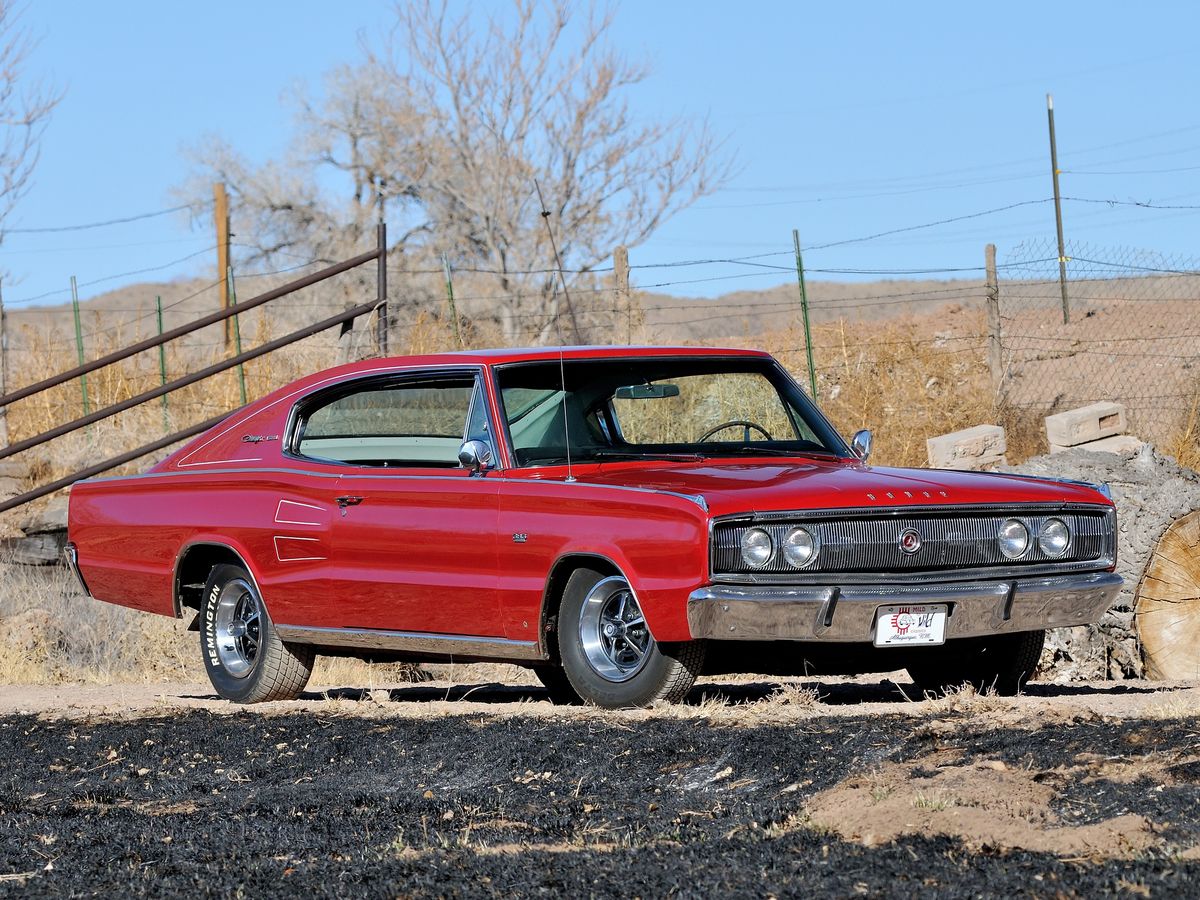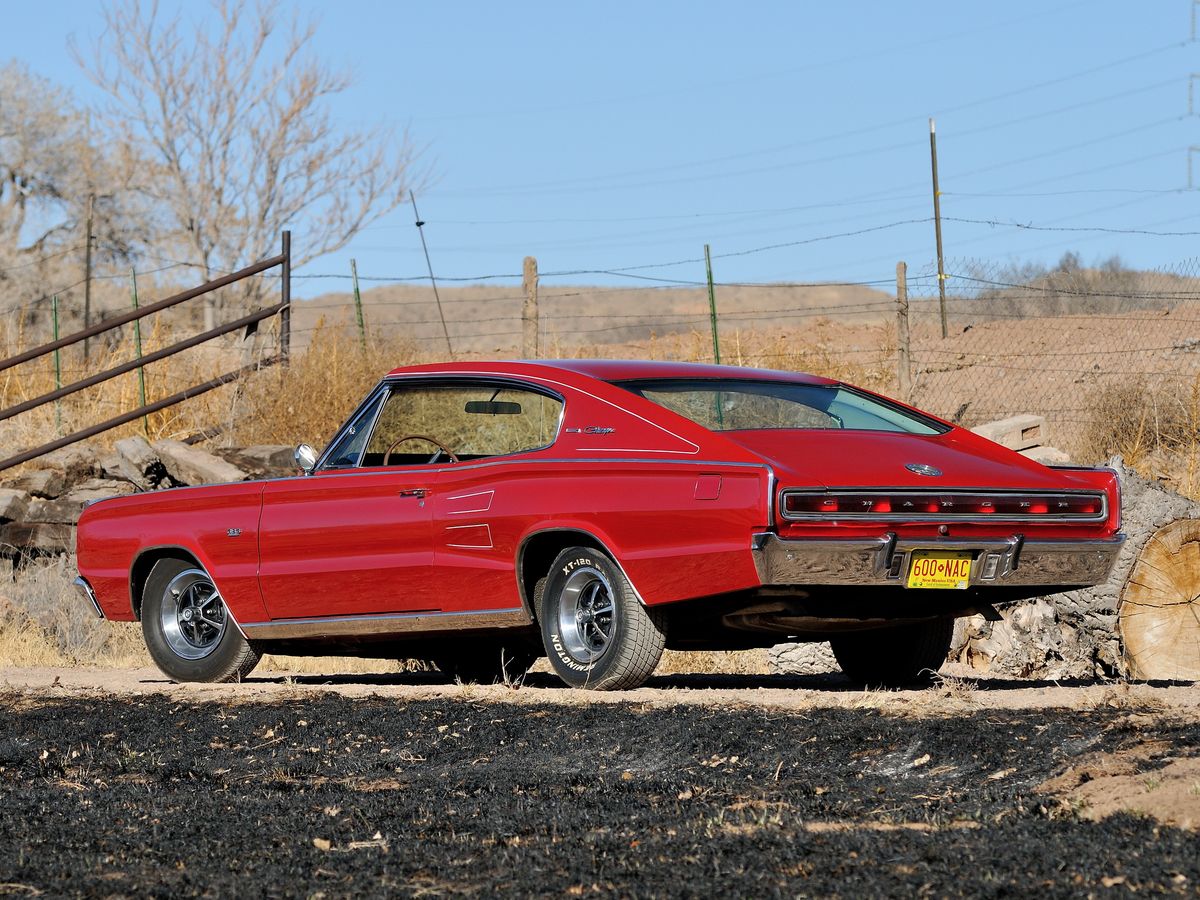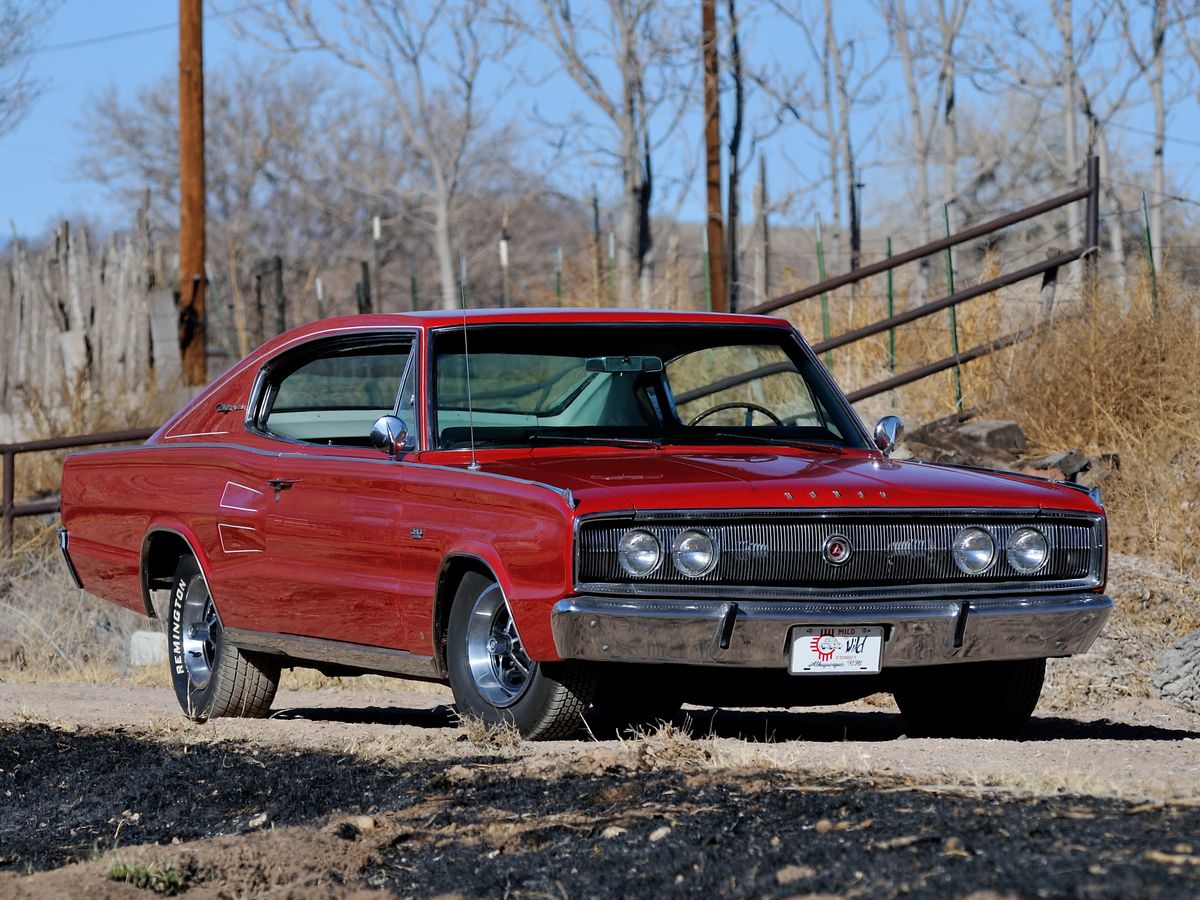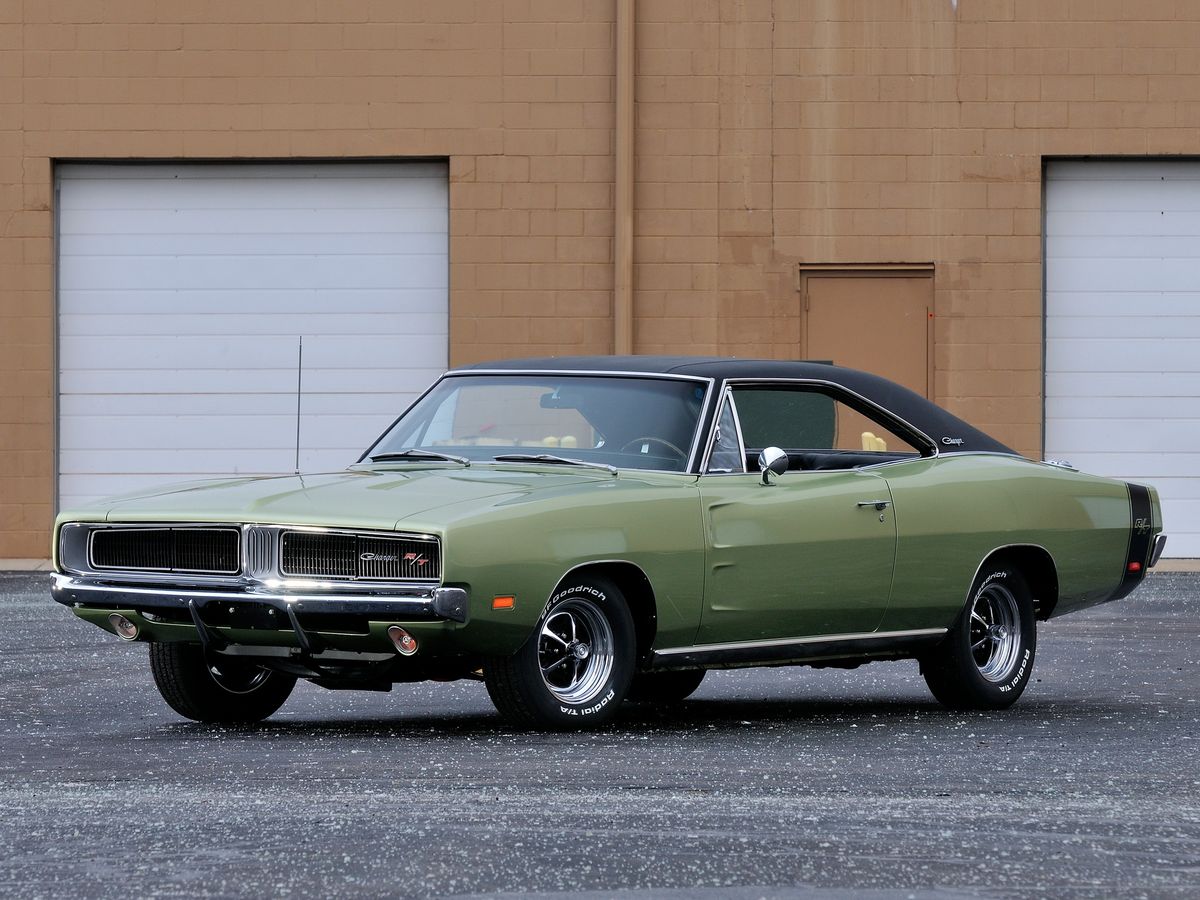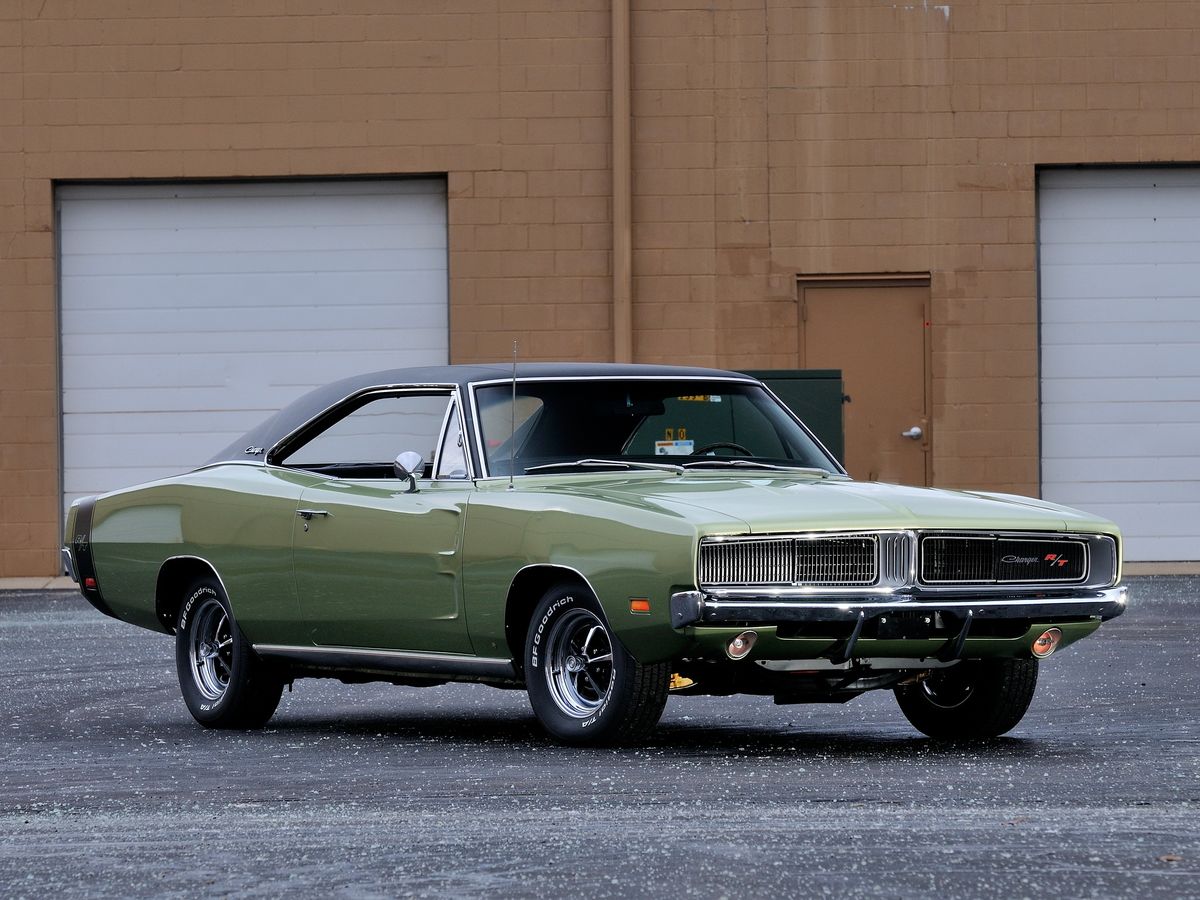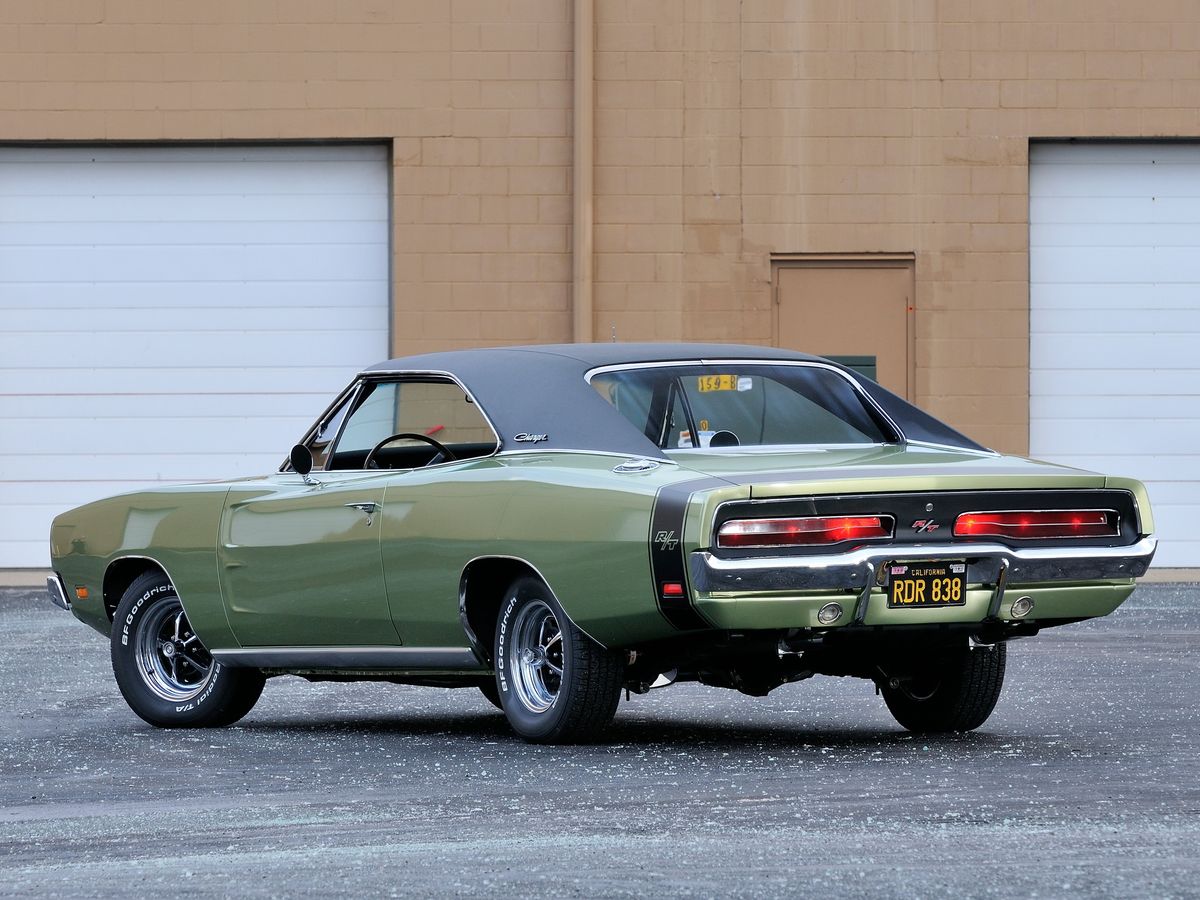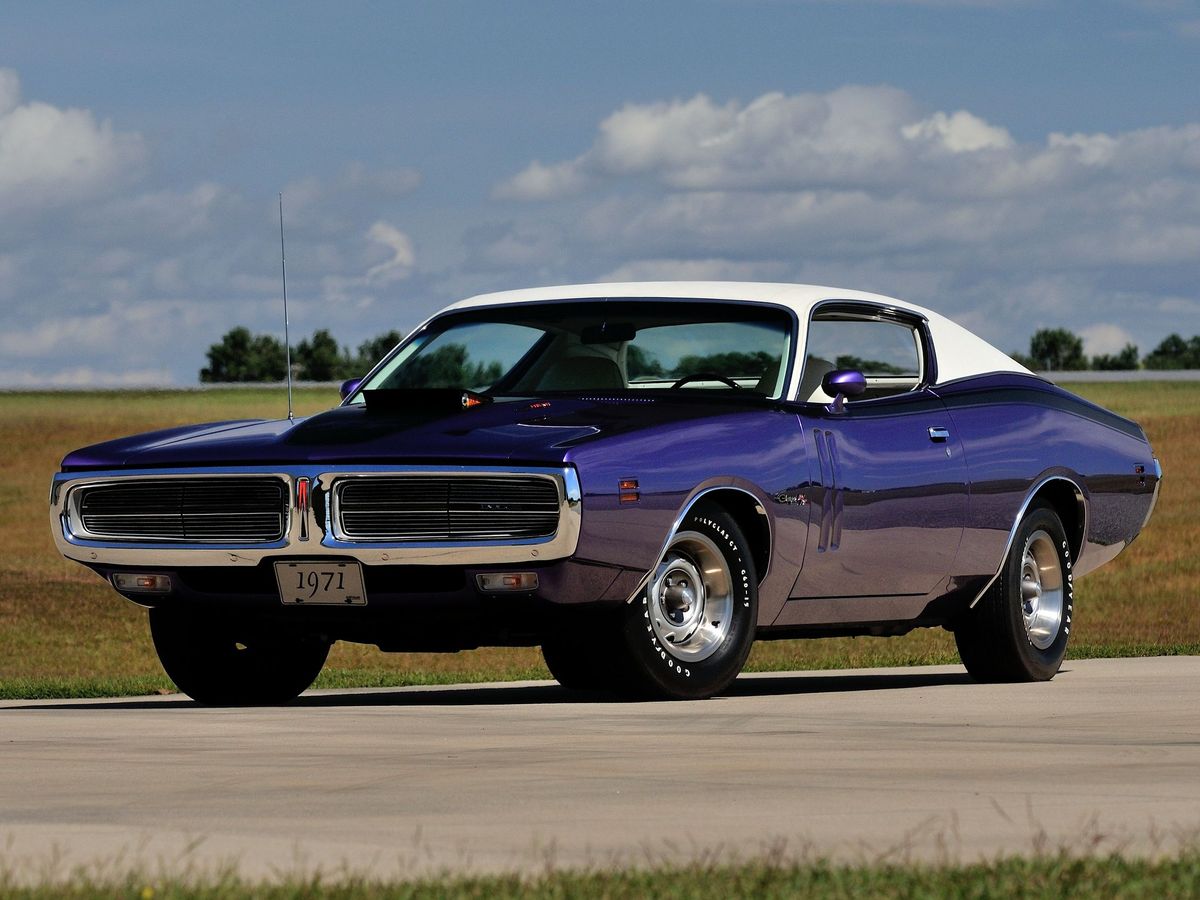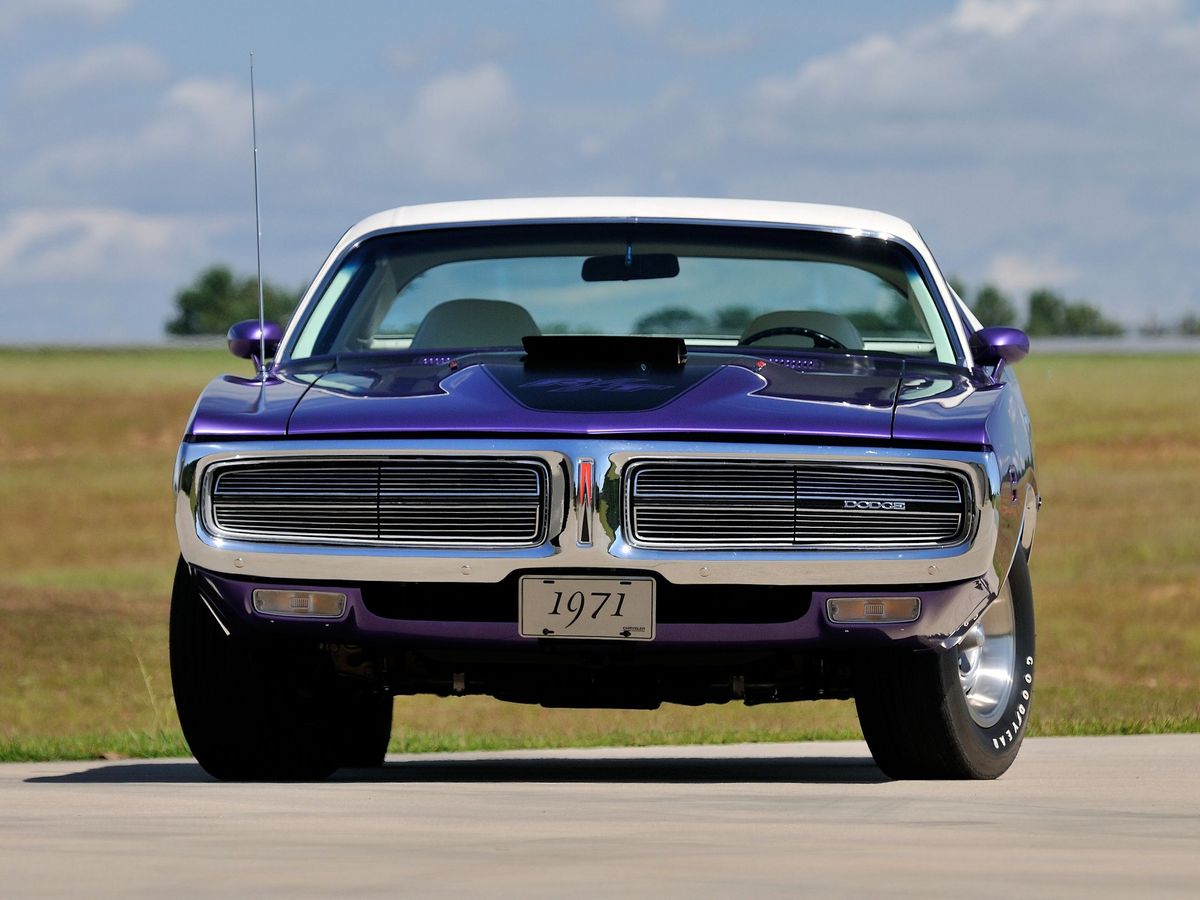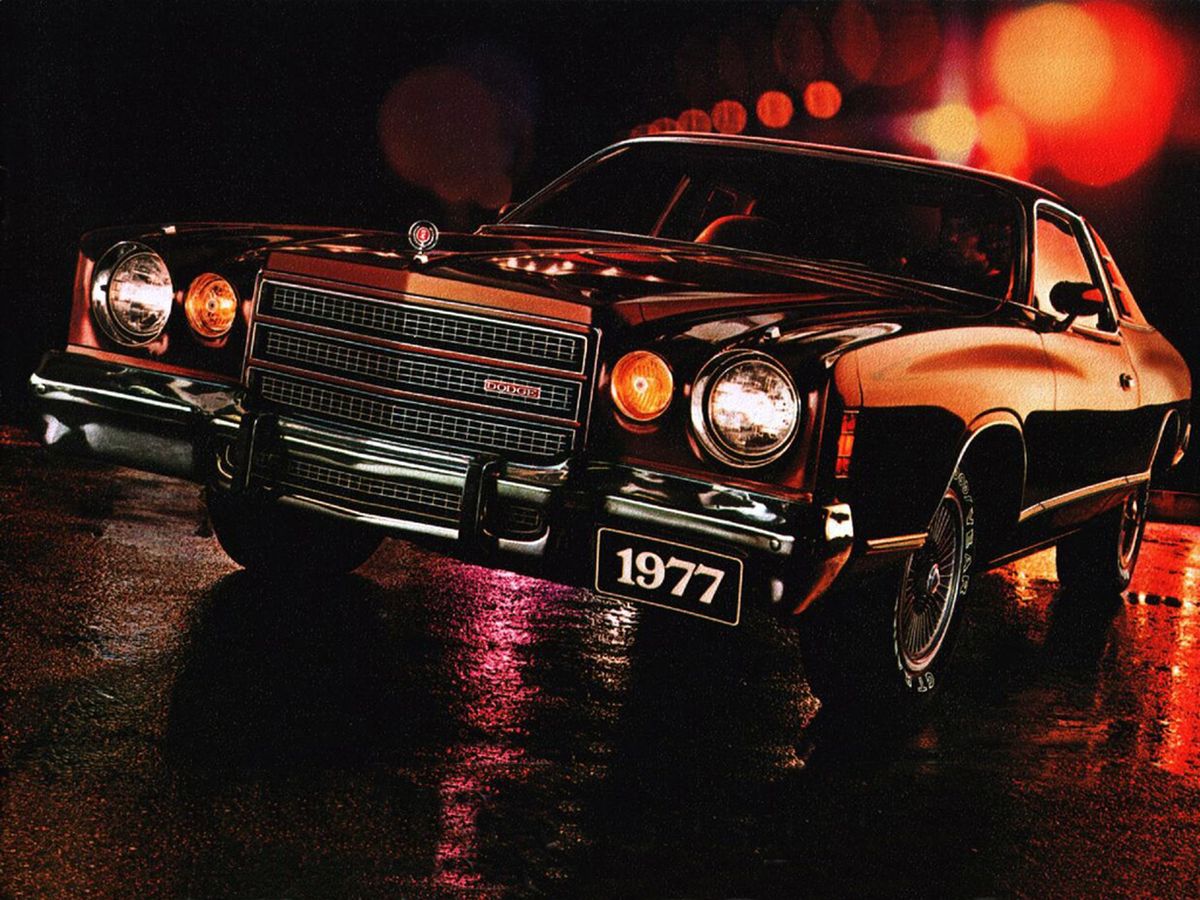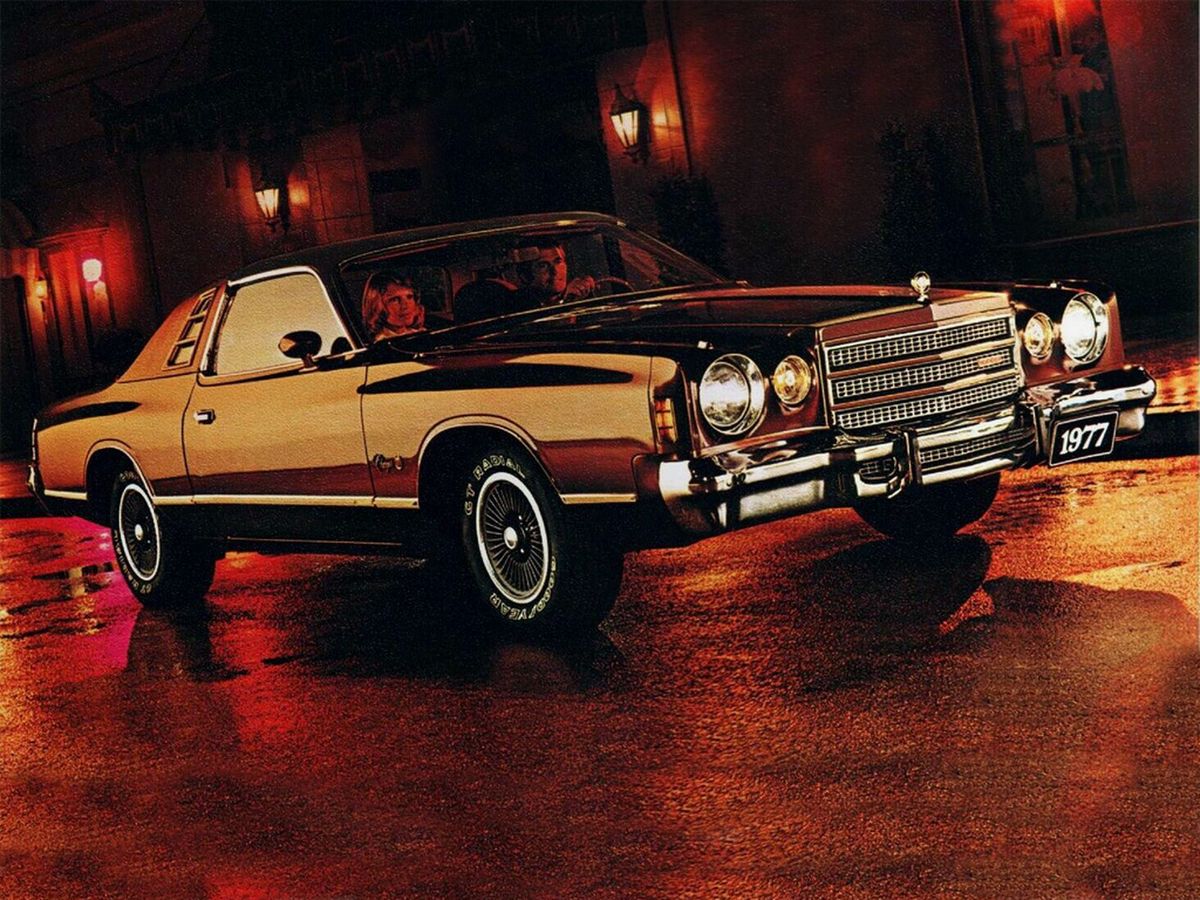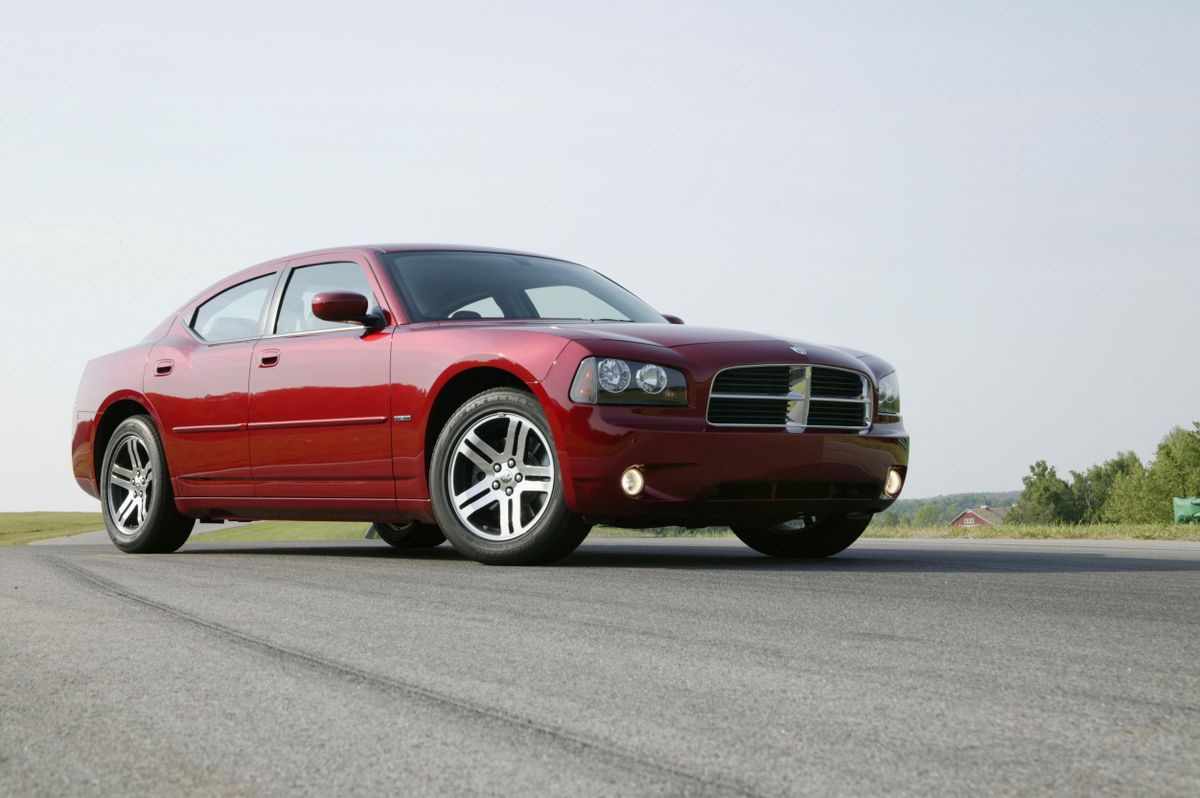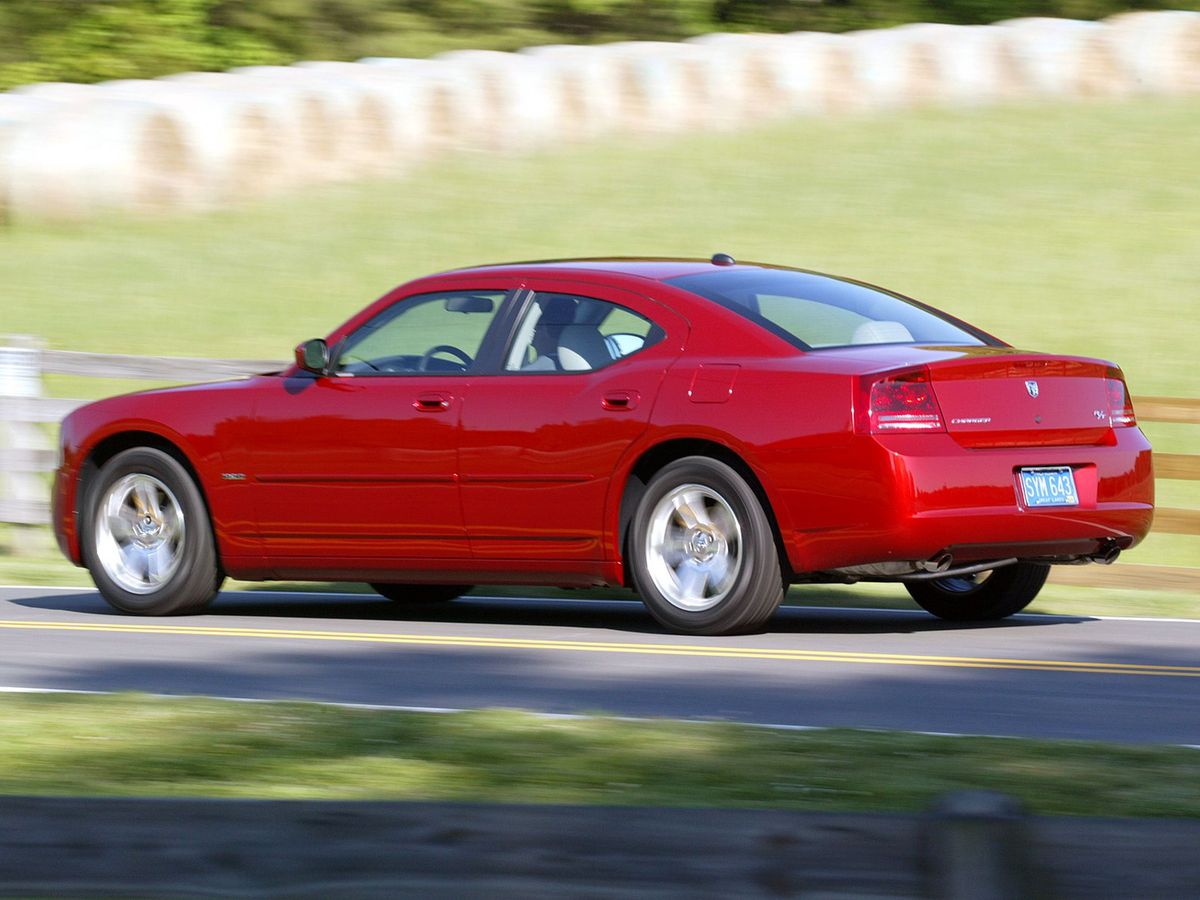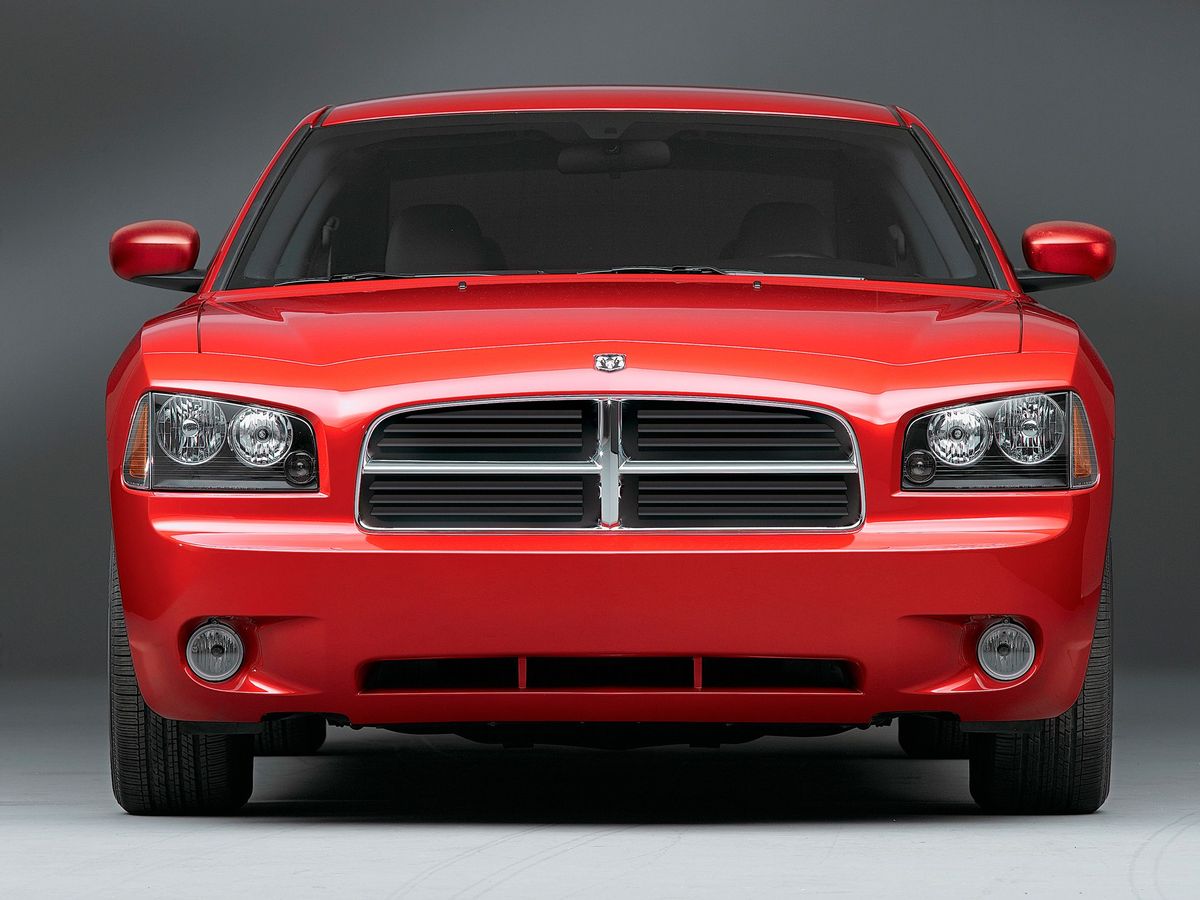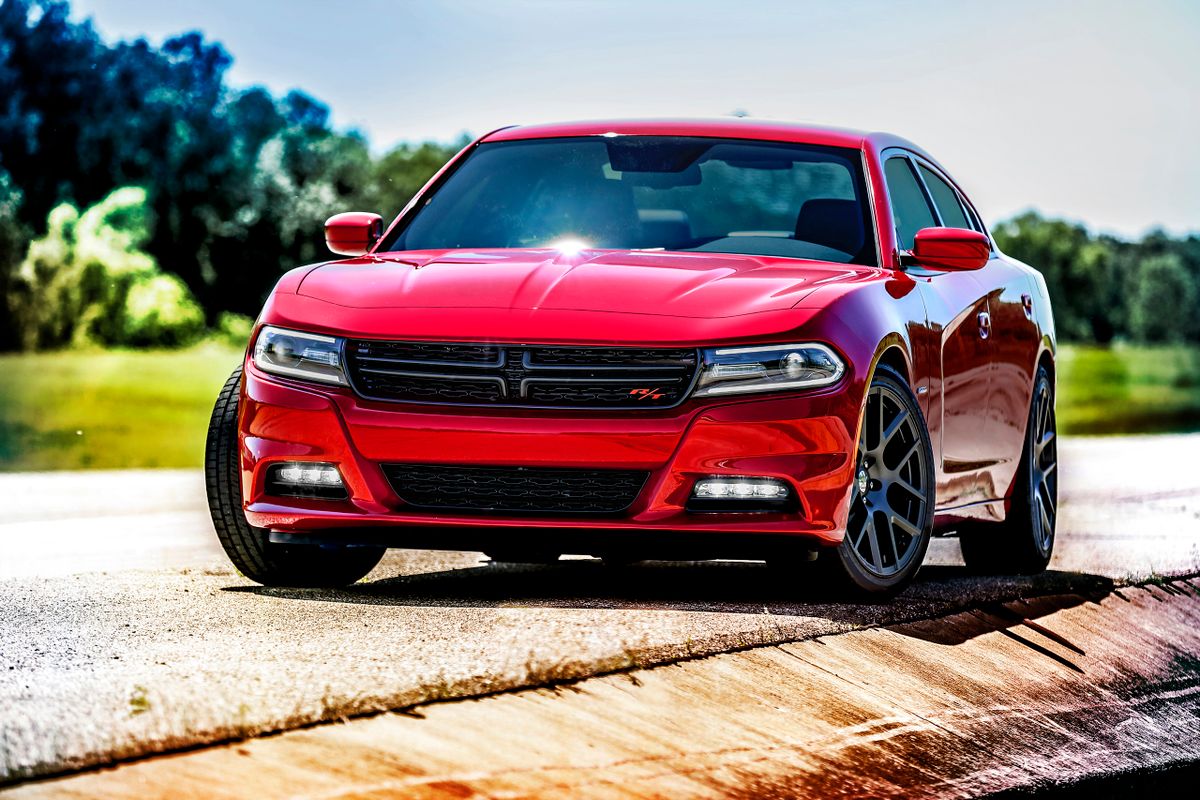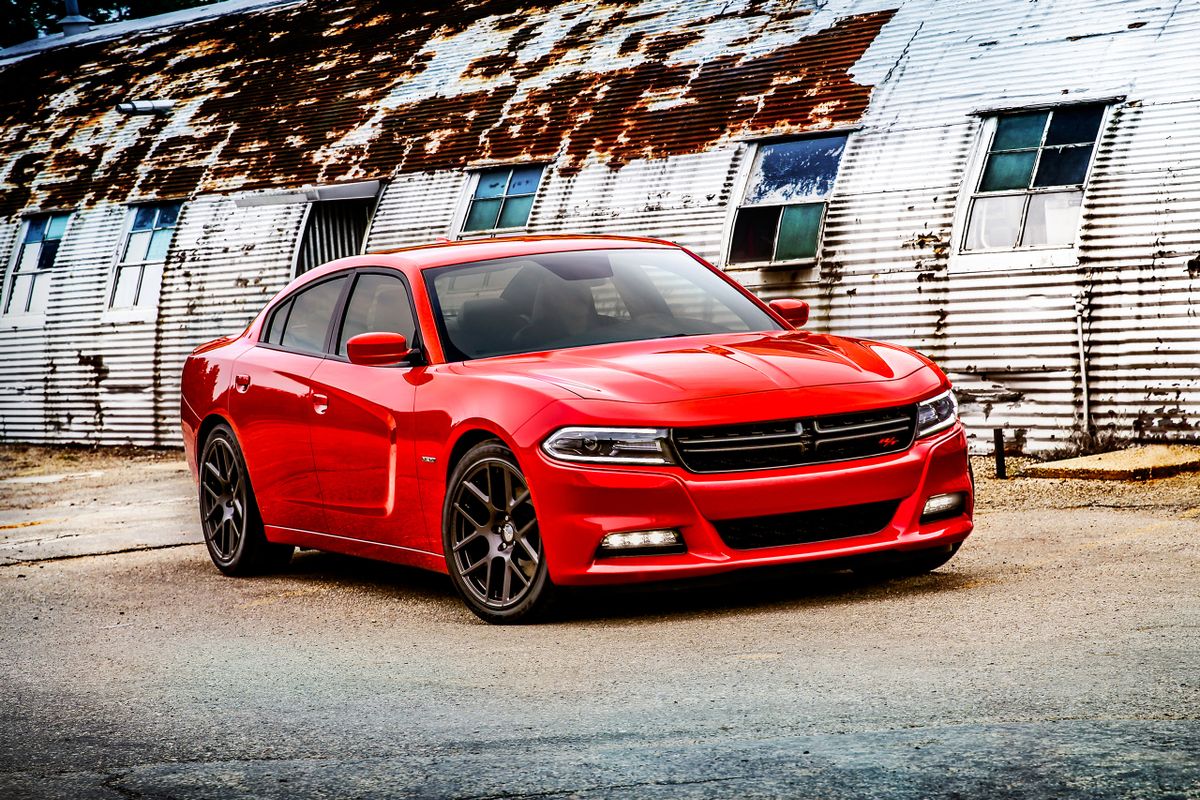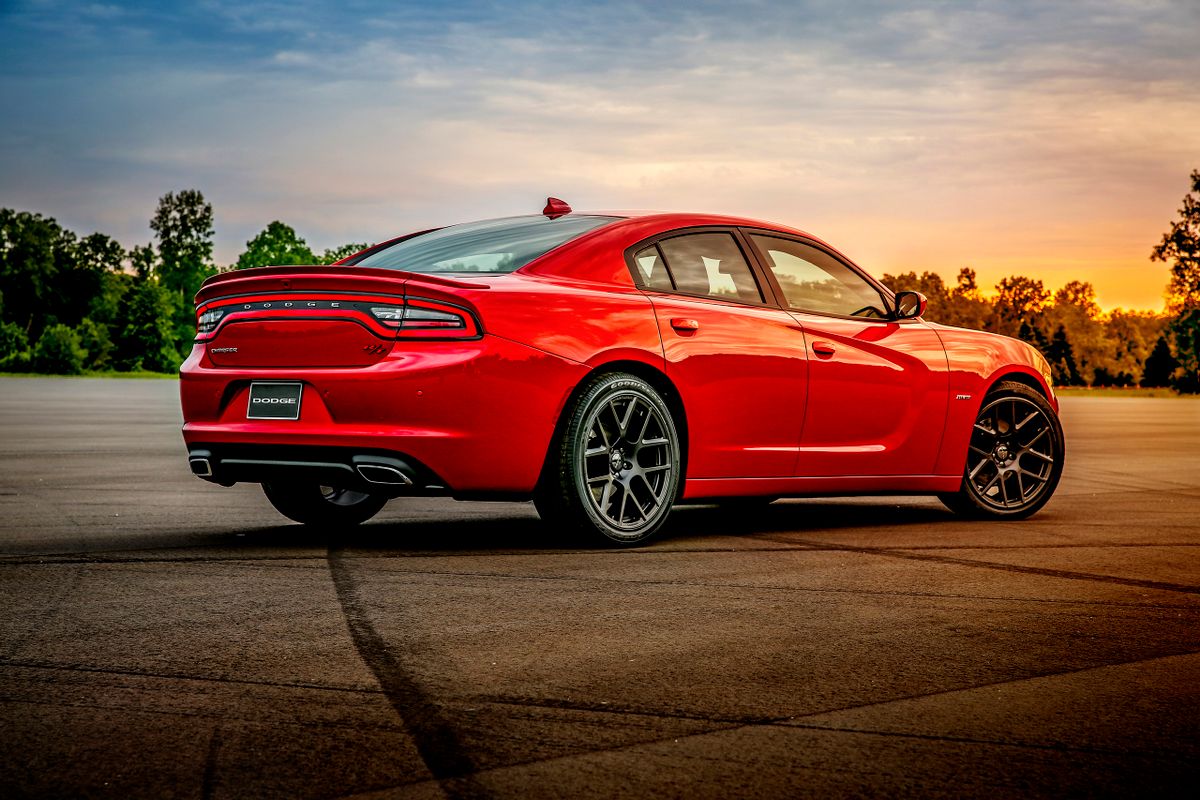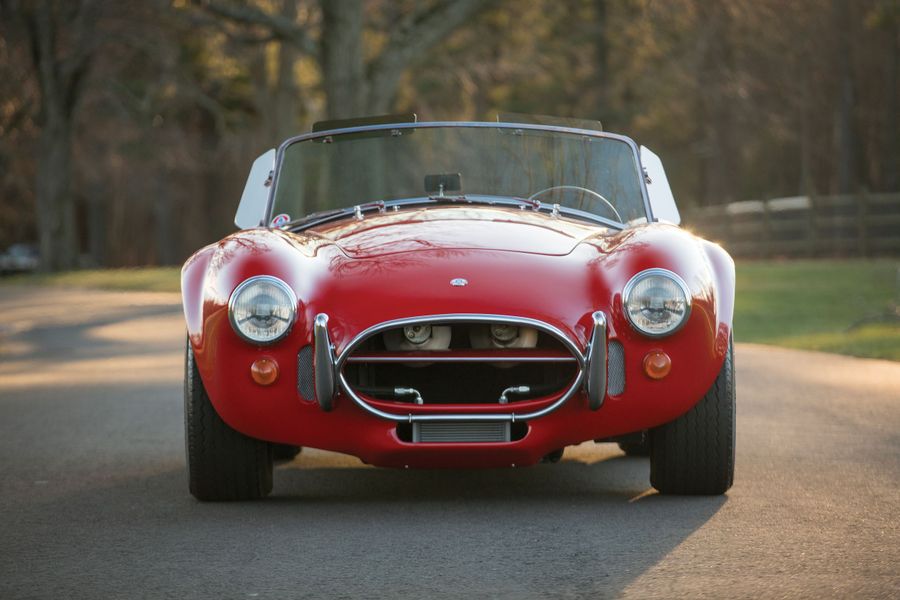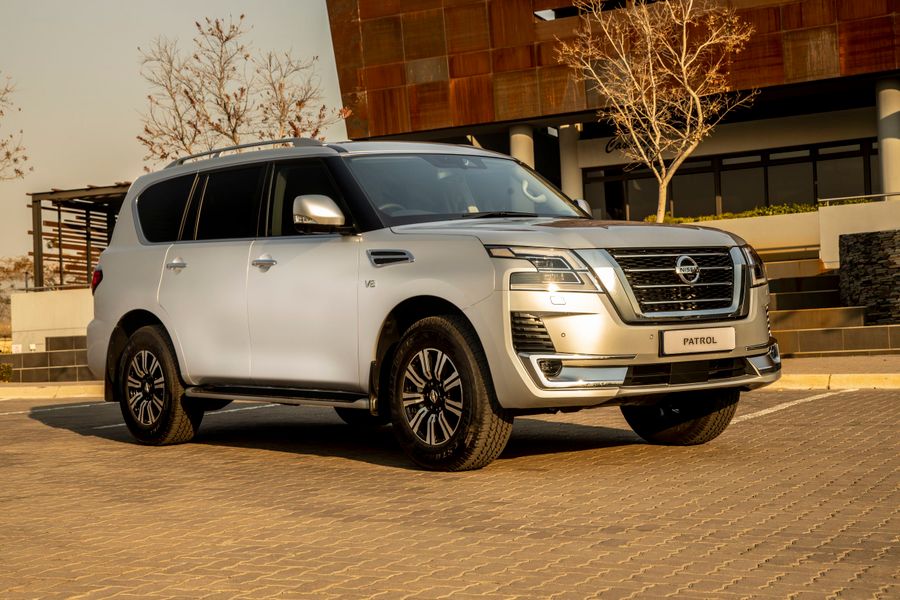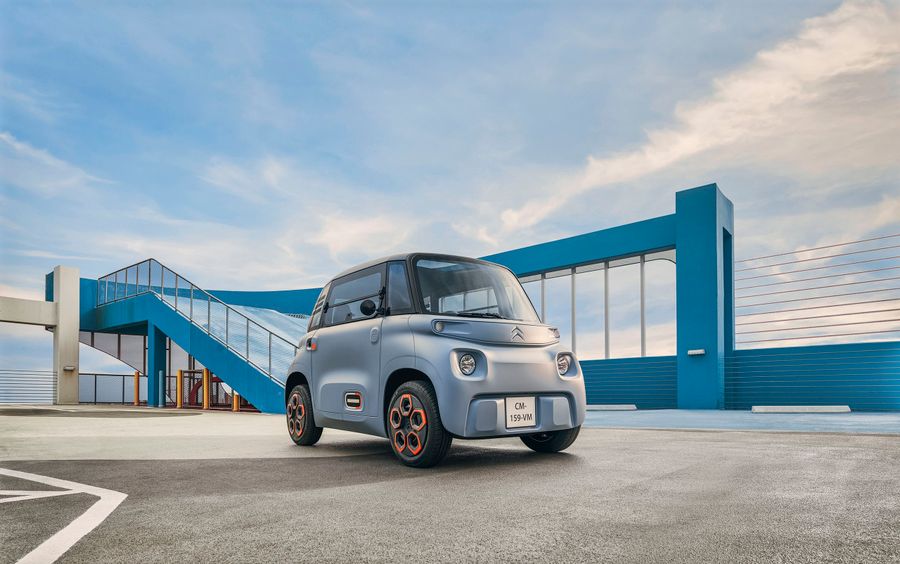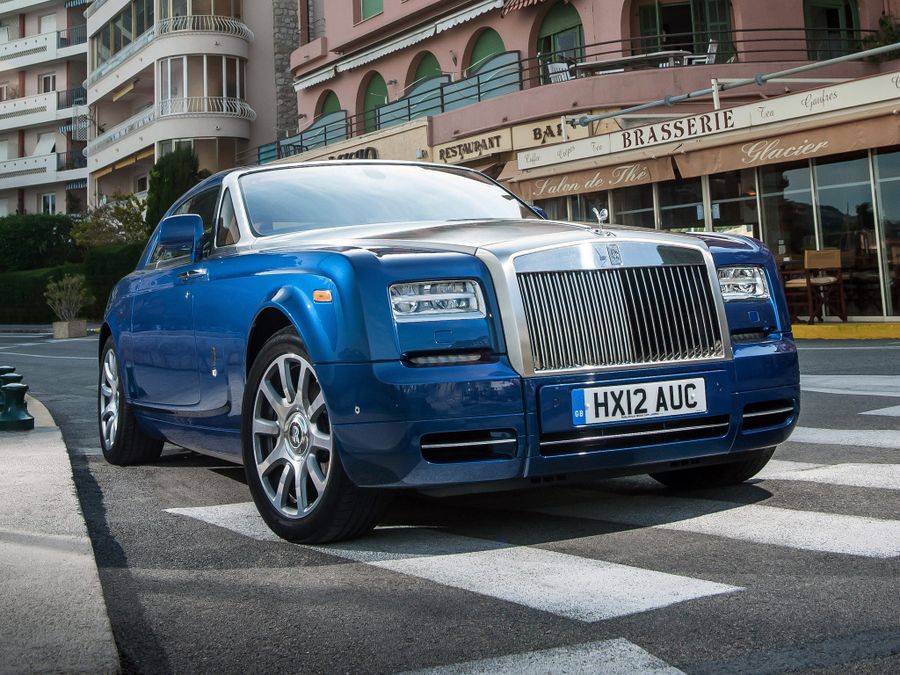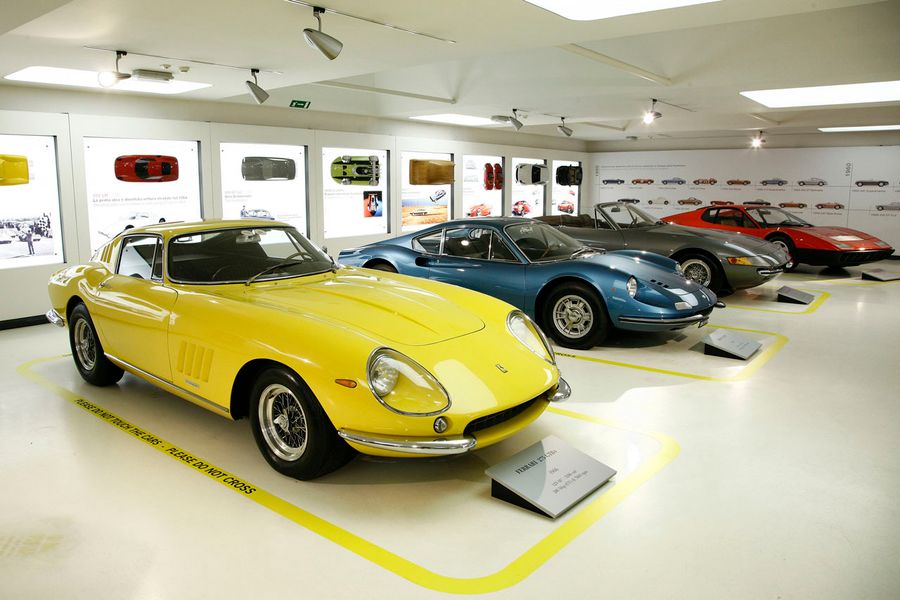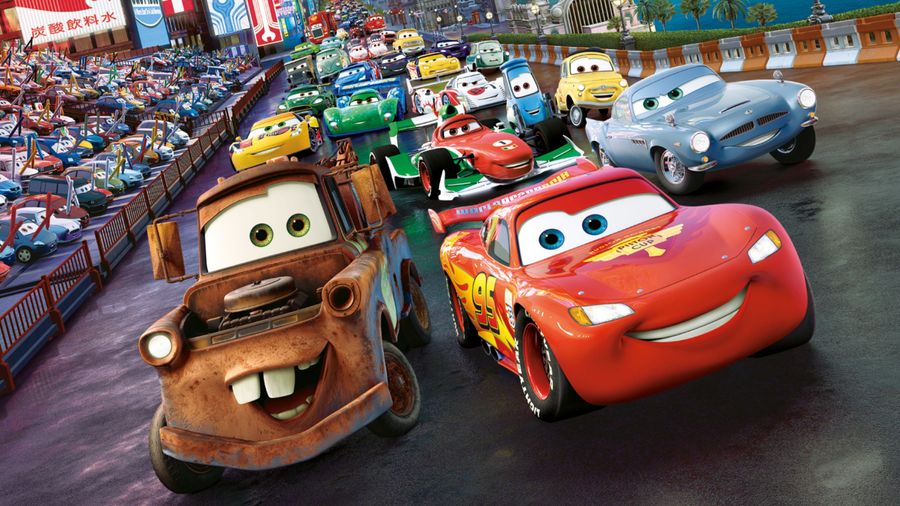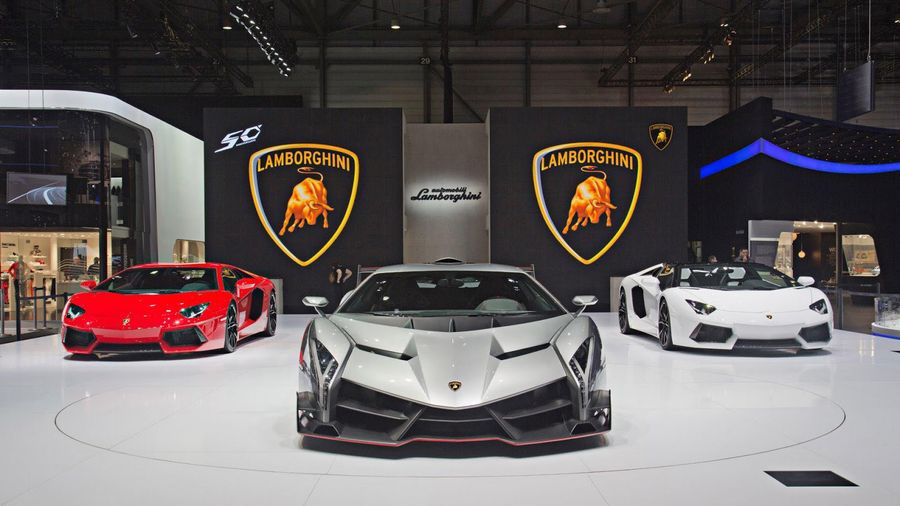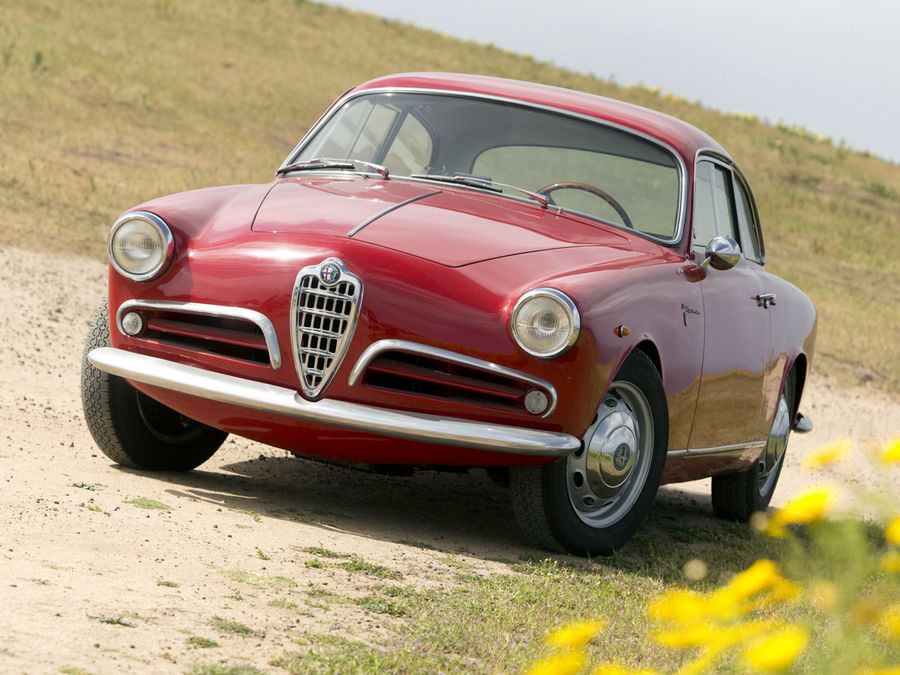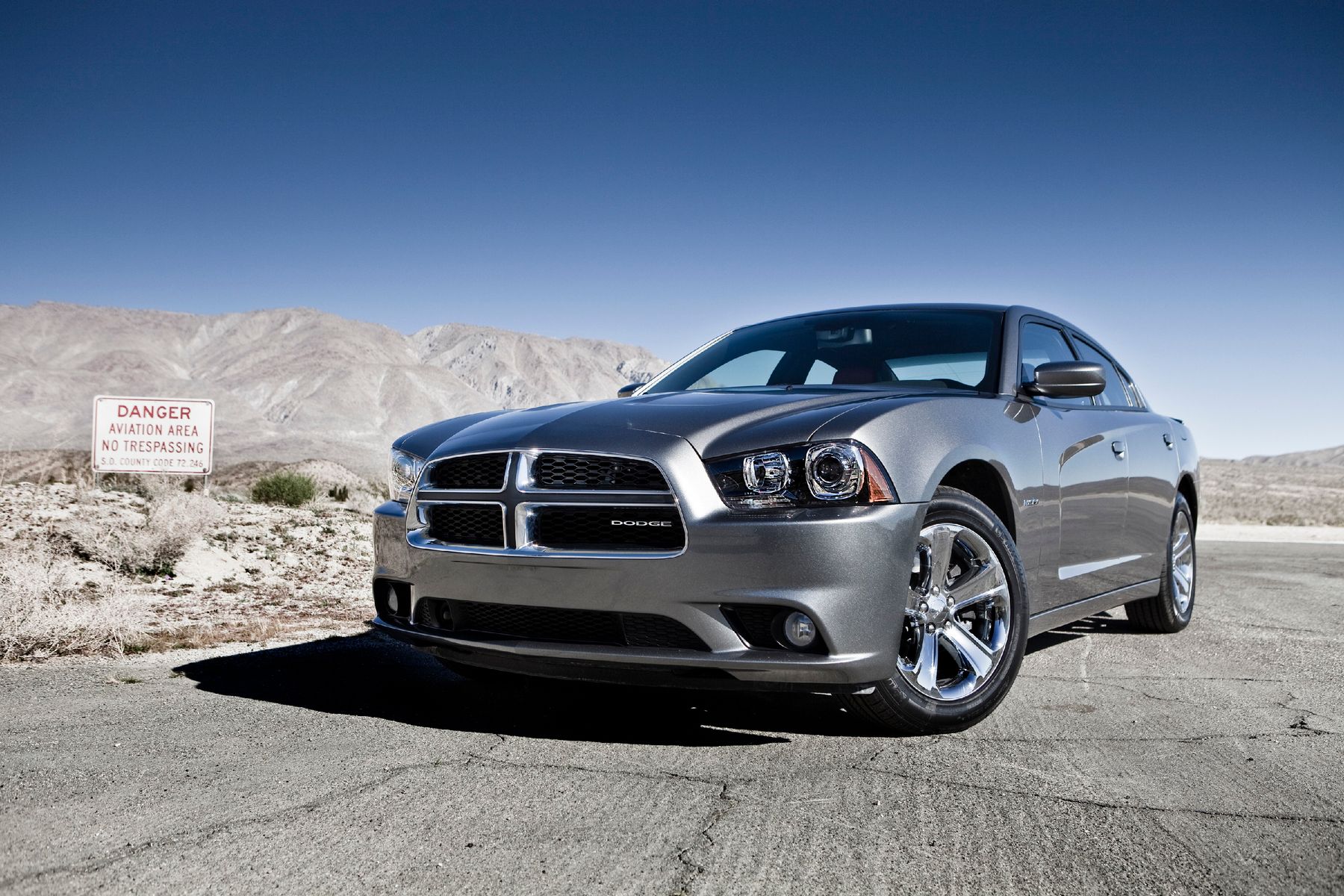
Back from the past
The Dodge Charger is one of the iconic Dodge cars, and the entire American automotive industry. It was one of the cars that kicked off the muscle car era of the 60s, and it ended that era in the 70s. However the Charger did not disappear, but continued to develop, changing formats, engines, design, and finally returned to the fans as the same ‘muscle car’, but with a modern touch.
The first generation
The first generation Charger lasted one year, from 1966 to 1967. It was a 2-door fastback with an aggressive design distinguished by a front end with a radiator that covered the headlights, similar to an electric razor. The body looked a little strange and disharmonious, which was due either to the hood that looked outdated, or, on the contrary, to the rear end that looked like it was from the 30s. But on the other hand, the supercar had the most powerful 8-cylinder engines to choose from: a 5.2-liter, 5.9-liter, 6.3-liter, 7.0-liter Hemi generating from 230 hp to 400 hp, accompanied by a 3 or 4-speed manual or 3-speed automatic transmission.
At high speeds, the Charger literally took off, as its bottom functioned like an aircraft wing, but due to the absence of an aircraft tail, it became almost uncontrollable.
The Charger was apparently the first production car with a spoiler. The characteristic unbalanced design allowed for tremendous speeds, but did not correlate with frantic power. At high speeds, the Charger literally took off, as its bottom functioned like an aircraft wing, but due to the absence of an aircraft tail, it became almost uncontrollable. The spoiler kept it on the ground, however, at a speed of 240 km/h. Such speeds were achieved on the track of the main American races NASCAR, in which the Charger ‘declassified’ all its rivals that year, and pilot David Pearson took no less than fourteen first places in the season and eventually became the champion of the whole year.
Of course, such a car was bound to become popular with motorists, and at first the Charger’s sales were growing. But very quickly they fell catastrophically, because in everyday life the muscle car was a really dangerous car for anyone who did not have the skills of a racer.
The second generation
It was produced from 1967 to 1970. In 1967, changes related to design and options were minimal, and the car underwent a major restyling in 1968. First of all, the design became more elegant and harmonious. Thanks to the new design, the Charger managed to evolve from an ‘electric razor’ to a classic ‘Coca-Cola bottle’, By the way, currently, such retro bottles are back in fashion, so you can roughly understand what the second Charger was like.
The body of the new Charger was a hardtop with a flattened rear, which determined the most memorable outlines of the legendary muscle car of all generations. But it received the status of a legend not so much for the shape as for its outstanding racing performance. To participate in NASCAR, Charger was the first of the cars to be tested in a wind tunnel. Consequently, two subtypes were created: Charger 500 and Charger Daytona. In 1969, the Charger Daytona and Charger 500 won 45 races out of 59. The car was so dominant in racing that NASCAR ultimately imposed restrictions on the engines of these cars.
In 1969, the Charger Daytona and Charger 500 won 45 races out of 59.
The capabilities of the 1969 Charger are demonstrated in the second half of Tarantino’s Death Proof, as the serial killer Stuntman Mike McKay drove this very car while attacking the girls driving the Dodge Challenger. There is an amazing moment in the film when you can hear the sound from the inside of the car developing 200 km/h, without any musical accompaniment, according to which one can imagine what a person feels in a creaky and rattling iron box with minimal safety options. It’s awful. In the film, the girls managed to outplay the maniac tactically with a certain amount of luck. Tarantino did not go against the truth, the Challenger is definitely cool, but the Charger is a racing car, so the Challenger had no chance in the race.
The third generation
It was produced from 1971 to 1974. The third generation Dodge Charger underwent major modernization. The car started featured a redesigned radiator grille with round headlights, less aggressive outlines and a modernized hood with an air intake above the air filter. The main trend was a gradual decrease in engine power, as muscle cars went out of fashion due to growing insurance payments and the oil crisis. The Charger became weaker, more fuel-efficient, but also safer.
The softer image was good for the Charger, and 1973 was one of the most successful years. The sales grew after Dodge offered several modifications of the Charger, for every taste, including the Charger Super Bee, Charger R / T and Charger 500, as well as several packages of options and design. The standard engines were 3.7-liter V6, 5.2-liter V8, 6.3-liter V-8 and 7.2-liter Magnum V-8 units.
The fourth generation
It was produced from 1975 to 1978. For the fourth generation Charger, Dodge chose a completely different direction, from now on it was not supposed to be a racing car, but a luxury car. The styling became less aerodynamical and aggressive, as the muscle car looked similar to a standard family car. The radiator turned into a small center grille, although the twin headlights remained on either side of the grille. There were 6-cylinder 5.2-liter and 5.9-liter engines, accompanied by a 3 or 4-speed manual or 3-speed automatic transmission. Strictly speaking, the 1975 Charger was not a genetic Charger, but a renamed Chrysler Cordoba. The Charger SE (Special Edition) was supposed to continue the racing tradition, but fewer than a thousand cars were sold.
In this form, the Charger clearly went downhill. In 1978, sales were less than 3 thousand units. Then it was replaced by a completely different car, a long and imposing ‘crocodile’ Dodge Magnum. Actually, with the departure of the last powerful brand representative Dodge Charger SE (Special Edition), the era of muscle cars was over. For the sake of historical justice, we must also mention the Dodge Shelby Charger, which was produced in the amount of several thousand units from 1983 to 1987. The car was built on the Chrysler L sports platform, but in fact it was a modified classic Charger. It did not even reach the power of the canon Charger models, but it had some racing abilities due to the design features.
The fifth generation
In 2005, the Charger returned from the past, summoned to life by the magic rituals of muscle car fans who have not forgotten about the glorious days of the Charger and its unfading glory as the NASCAR ruler. The fifth generation was quite successfully sold until 2010. The new Charger did not look as brutal and angular as its prototype, but it kept its aggressive features. It was equipped with powerful engines, including 3.5-liter V6 and Hemi V8 unit. The car was offered in SXT and R / T trim levels.
The SE models came with 17-inch steel wheels, ABS, air conditioning, CD player, keyless entry and cruise control. The R / T models offered a V8 engine, twin tailpipes, 18-inch alloy wheels, spoilers, heated seats, automatic climate control and more. The SE was equipped with a 3.5-liter V6 engine producing 250 hp, whereas the R / T version was offered with a 5.7-liter Hemi V8 with 340 hp. A 5-speed automatic transmission with the ability to shift gears was standard on all models. There were also packages that increased either the comfort or the power of the cars. The list of standard equipment included traction control, stability control and side curtain airbags. In NHTSA crash tests, the Charger received a five-star rating (maximum) for frontal collision protection, and a four-star rating for front passenger safety in side impact tests.
The sixth generation
It has been produced from 2010 to the present, with restyling taking place in 2014. The new Dodge Charger is the second generation of the revived muscle car. It is powered by the new 3.6-liter Pentastar V6 engine producing 292 hp, which is already much closer to the legendary ancestor. The design has clearly improved compared to the fifth generation, as it has become more composed and harmonious. At the same time, the interior of the modern Charger has become more comfortable, featuring high-quality materials, high-tech functions, advanced security systems.
The sixth-generation Charger is a large sedan that comes in two basic trim levels, the SE and R / T. Entry-level SE models are rear-wheel-drive only, while the R / T can be have either rear-wheel drive or all-wheel drive. Entry-level SE models feature 17-inch alloy wheels, automatic headlights, air conditioning, power driver’s seat, cruise control, trip computer and more. The list of options available on the sixth generation is so long that Dodge has split it into 12 packages to suit all tastes.
In terms of power, the new Dodge Charger is the closest to the canon muscle cars, and at the same time, it is not an iron suicidal box, but a modern technologically advanced safe car.
The SE models come with a new 3.6-liter V6 engine producing 292 hp, whereas the R / T versions are equipped with a 5.7-liter V8 with 370 hp. Both engines have a 5-speed automatic transmission with manual shift function that sends power to the rear wheels, but all-wheel drive can be provided for the V8-powered R / T.
As part of the 2014 restyling, the Dodge Charger received many new options and features, divided into many trim levels: SE, SXT, R / T, R / T Road & Track, R / T Scat Pack, SRT 392 and SRT Hellcat. All models are rear-wheel drive, but the SE and SXT offer optional all-wheel drive. Overall, the 2015 Charger has been seriously upgraded both inside and outside. The standard equipment includes: an 8-speed automatic transmission and new engines, including a SRT 392 unit with 400 hp and a SRT Hellcat unit with 707 hp. The interior of the car is finished with better materials and equipped with advanced options and functions.
The standard safety functions for the 2019/2020 Dodge Charger include electronic stability and traction control, anti-lock brakes, front passenger airbags, driver side knee airbags, curtain side airbags and active front head restraints. The Insurance Institute for Highway Safety (IIHS) awarded the restyled version a 'good' rating in frontal impact, side impact and roof strength crash tests. Summing up, we can confidently say that, in terms of power, the new Dodge Charger is by far the closest to the canon muscle cars, and at the same time, it is not an iron suicidal box, but a modern technologically advanced safe car. And once it was considered almost the most dangerous car in the world, because on the first day of sales, 8 people crashed while driving it.


